Ditapis dengan
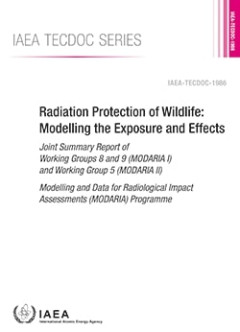
Radiation Protection of Wildlife: Modelling the Exposure and Effects, IAEA TE…
In recent years there has been a rapid development in models and approaches to assess whether the environment (or wildlife) is protected from releases of radioactive material. Through the Environmental Modelling for Radiation Safety (EMRAS and EMRAS II) and Modelling and Data for Radiological Impact Assessments (MODARIA I and MODARIA II) programmes, the IAEA has facilitated knowledge sharing on…
- Edisi
- -
- ISBN/ISSN
- 978-92-0-138021-0
- Deskripsi Fisik
- 89 p
- Judul Seri
- IAEA TECDOC series
- No. Panggil
- 614.715 IAE r
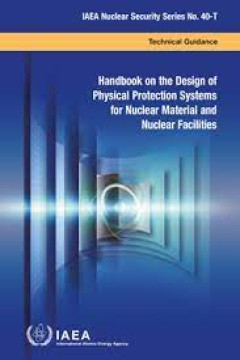
Handbook on the Design of Physical Protection Systems for Nuclear Material an…
This publication provides comprehensive detailed guidance for States, competent authorities and operators on how to implement the recommendations and implementing guidance of existing IAEA Nuclear Security Series publications for an effective physical protection system (PPS) for nuclear facilities and nuclear materials in use and storage. It provides further technical detail on how to design an…
- Edisi
- 2021
- ISBN/ISSN
- 978-92-0-100120-7
- Deskripsi Fisik
- 200 p
- Judul Seri
- IAEA Nuclear Security Series No. 40-T
- No. Panggil
- 621.039.58
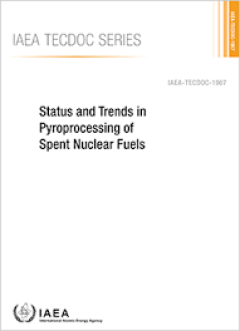
Status and Trends in Pyroprocessing of Spent Nuclear Fuels: IAEA TECDOC No. 1967
The importance of recycling the spent nuclear fuel through partitioning processes has been recognized worldwide for increasing and sustaining nuclear energy. Therefore, the development of advanced partitioning processes, based either on hydrometallurgical or on pyrometallurgical technologies, has received an increasing interest in recent years. Moving towards industrial demonstration, partition…
- Edisi
- 2021
- ISBN/ISSN
- 978-92-0-122821-5
- Deskripsi Fisik
- 150 p
- Judul Seri
- -
- No. Panggil
- 363.7289 IAE s
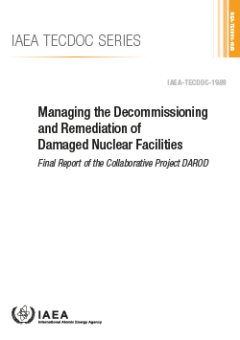
Managing the decommissioning and remediation of damaged nuclear facilities - …
In response to the accident at the Fukushima Daiichi nuclear power plant in March 2011, the IAEA developed the IAEA Action Plan on Nuclear Safety. One of the objectives of the plan was to ensure that, following a nuclear emergency, people and the environment are protected from ionizing radiation. One of the activities undertaken to address this objective was the International Project on Mana…
- Edisi
- 2021
- ISBN/ISSN
- 978-92-0-142521-8
- Deskripsi Fisik
- 136 p
- Judul Seri
- -
- No. Panggil
- 539.7 IAE m
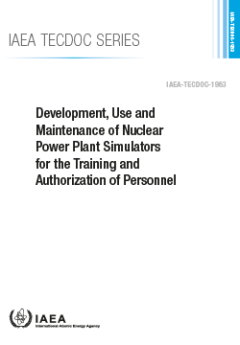
Development, Use and Maintenance of Nuclear Power Plant Simulators for the Tr…
The use of simulators for the training and qualification of nuclear power plant (NPP) control room operating personnel has become a standard practice throughout the world to develop and reinforce knowledge of plant systems and their relationships. It is an approach to increase the ability to apply plant procedures, to advance practical skills in operating the plant in normal, abnormal and emerg…
- Edisi
- 2021
- ISBN/ISSN
- 978-92-0-121121-7
- Deskripsi Fisik
- 182 p
- Judul Seri
- -
- No. Panggil
- 621.312 IAE d
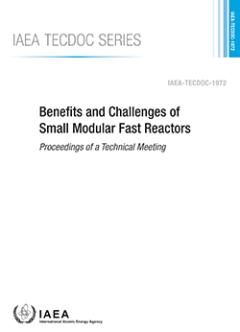
Benefits and Challenges of Small Modular Fast Reactors: IAEA TECDOC No. 1972
The IAEA ussually defines small and medium sized or modular reactors (SMRs) as reactors producing up to 300 MW(e) (small sized or small modular) and reactors producing 300-700 MW(e) (medium sized). There has been increasing interest in SMRs globally owing to their variois benefits, such as flexible power generation options, the wide range of applications, enhanced safety resulting from inherest…
- Edisi
- 2021
- ISBN/ISSN
- 978-92-0-124121-4
- Deskripsi Fisik
- 362 p
- Judul Seri
- -
- No. Panggil
- 621.483 IAE b
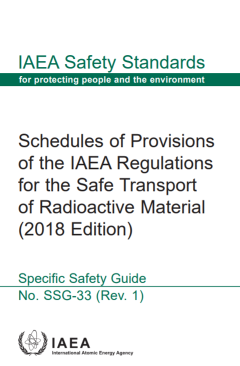
Schedules of provisions of the IAEA regulations for the safe transport of ra…
Radioactivity is a natural phenomenon and natural sources of radiation are features of the environment. Radiation and radioactive substances have many beneficial applications, ranging from power generation to uses in medicine, industry and agriculture. The radiation risks to workers and the public and to the environment that may arise from these applications have to be assessed and, if necessar…
- Edisi
- 2021
- ISBN/ISSN
- 978-92-0-121921-3
- Deskripsi Fisik
- 322 p
- Judul Seri
- IAEA Safety Standards Series No. SSG-33 (Rev. 1)
- No. Panggil
- 656.073 IAE s
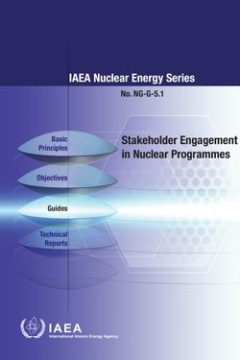
Stakeholder Engagement in Nuclear Programmesl : IAEA Nuclear Energy Series NG…
As societies evolve and citizens have increasingly easy access to more information, stakeholder engagement has become recognized as a growing area of strategic value for the development of nuclear programmes. Nuclear science and technology often face unique challenges with regard to public understanding and acceptance. It is generally recognized that nuclear technologies contribute significantl…
- Edisi
- 2021
- ISBN/ISSN
- 978–92–0–133421–3
- Deskripsi Fisik
- 78 p
- Judul Seri
- IAEA Nuclear Energy Series NG-G-5.1
- No. Panggil
- 621.039:005.331 IAE s
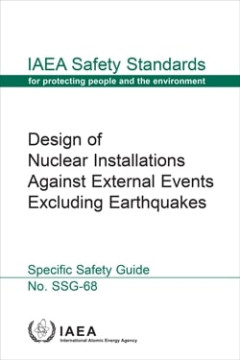
Design of Nuclear Installations Against External Events Excluding Earthquakes…
The status of the IAEA safety standards derives from the IAEA’s Statute, which authorizes the IAEA to establish or adopt, in consultation and, where appropriate, in collaboration with the competent organs of the United Nations and with the specialized agencies concerned, standards of safety for protection of health and minimization of danger to life and property, and to provide for their appl…
- Edisi
- IAEA Safety Standards Series.
- ISBN/ISSN
- 978-92-0-136121-9
- Deskripsi Fisik
- 112 p
- Judul Seri
- IAEA Safety Standards Series.
- No. Panggil
- 621.039.58 IAE d
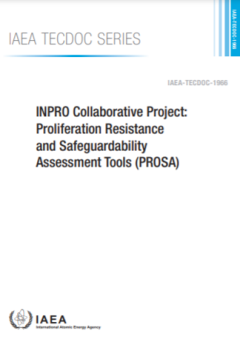
INPRO Collaborative Project: Proliferation Resistance and Safeguardability As…
This publication presents the results of the INPRO collaborative project: Proliferation Resistance and Safeguardability Assessment (PROSA) Tools. The PROSA assessment process has been developed to specifically address the needs of national self-assessors performing an INPRO Nuclear Energy System Assessment of sustainability. The main objective of this project is to explore approaches to make th…
- Edisi
- 2021
- ISBN/ISSN
- 978-92-0-123021-8
- Deskripsi Fisik
- 108 p
- Judul Seri
- -
- No. Panggil
- 621.483 IAE i
 Karya Umum
Karya Umum  Filsafat
Filsafat  Agama
Agama  Ilmu-ilmu Sosial
Ilmu-ilmu Sosial  Bahasa
Bahasa  Ilmu-ilmu Murni
Ilmu-ilmu Murni  Ilmu-ilmu Terapan
Ilmu-ilmu Terapan  Kesenian, Hiburan, dan Olahraga
Kesenian, Hiburan, dan Olahraga  Kesusastraan
Kesusastraan  Geografi dan Sejarah
Geografi dan Sejarah